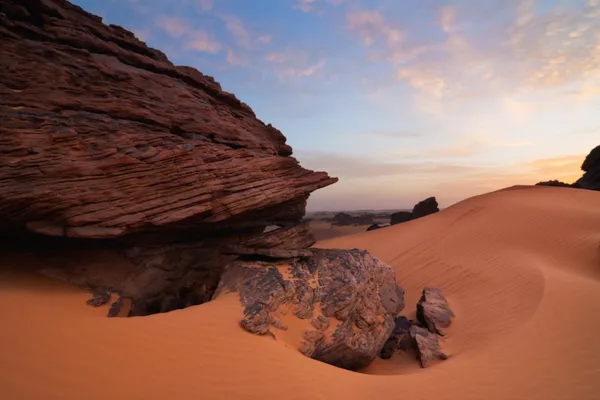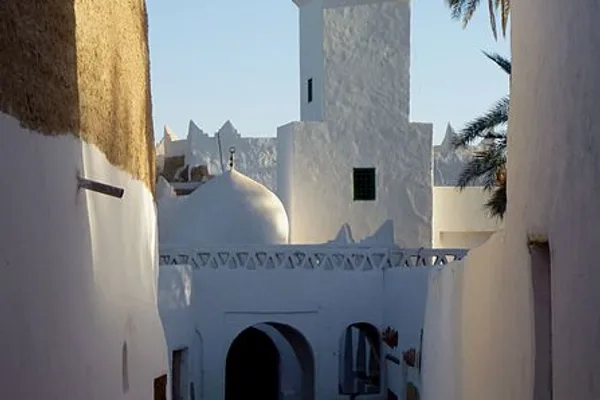Discover the Untouched Beauty of Libya: A Gem Waiting to Be Explored
Libya, a hidden treasure in North Africa, offers a unique blend of history, culture and stunning landscapes. From the bustling capital city of Tripoli with its rich history and Mediterranean coastline to the ancient Roman city of Leptis Magna, tourists are in for a journey back in time. Explore the Sahara Desert’s majestic sand dunes and the captivating oasis of Ghadames, known as the “Pearl of the Desert.”
Don’t miss the vibrant local markets, savouring traditional Libyan cuisine like Couscous and Bazeen. Whether you’re a history lover or an adventurer, Libya promises an unforgettable experience. Let Al Layah Tours LLC assist in making your Libyan journey seamless with the best travel packages, hotel deals and visa consultations.


For UAE citizens applying for a Libyan visa, the following requirements generally apply:


Acacus Mountains
Golden sand dunes cover the ground and cling to the sides of the basaltic mountain range that rises abruptly out of the flat Sahara desert. Forces of nature have always shaped this place, clearly visible in the sand that piles in every rock niche and side canyon of the mountain range, and seemingly embrace the rocks of the terrain.

Ghadames
A tad less than 300 miles away from Tripoli there exists an ancient getaway, an oasis made of mud, lime, and the trunks of palms. Covered alleyways and heat reflecting, creme-colored walls weave in and out of grottos and lead to the old town spring water pool. This pre-Saharan city is Ghadames, also known as the ‘pearl of the desert’.

Qasr al-Haj
Berber architecture is probably one of the most evocative architectural styles in the world. The simplicity of the structures merge with the harsh landscape of the Sahara desert to create a timeless beauty. Some Berber structures in neighboring Tunisia became world-famous after George Lucas included them in his Star Wars movies.

Gaberoun Oasis
This brilliant blue-green gem of a lake, surrounded by golden sand as far as the eye can see, looks like a small pocket of island paradise hidden among the dunes of the Sahara Desert. Palm trees fringe the water, and the ruins of an abandoned village dot one corner of the shore.

Waw an Namus
“Seen from space, few other dormant volcanoes look as exotic and spectacular as Waw an Namus,” says NASA’s Earth Observatory. From high above, the volcano is clear to see in the Sahara. It’s surrounded by a smudge of dark basaltic ash and tephra, which extends between six and 12 miles around the central caldera in stark contrast to the surrounding desert. And inside the caldera lie three glinting lakes surrounded by flecks of green.

Leptis Magna
In what is now Libya, Leptis Magna was once the shining star of the Roman Empire. As far as ruins go, the city still stands out as a superior example of Rome’s considerable advances in urban planning and architecture. Despite existing in an unstable nation and sporadically under threat of being caught in the crossfires of civil unrest, it has survived as one of the most complete set of Roman ruins standing.

Arch of Marcus Aurelius
In the mid-second century, the coastal town of Oea (now modern-day Tripoli in Libya) began an architectural shift to better reflect its recently acquired status as a Roman colonia. Monumental Roman-style structures were erected in what is now Tripoli’s old town, bringing a distinctly Roman identity to a settlement founded by the Phoenicians and ruled by Greeks and Carthaginians before the Romans arrived.

Atiq Mosque
Two palm trunks mark the entrance to one of Libya’s most beautiful mosques. The whitewashed mud-brick structure dates from the 7th century, and greeted Muslim pilgrims and caravan routes that crossed this area for a centuries. During the heyday of the Sahara caravan trade routes, the oasis city of Awjilah was an important stop on the way to the Cyrenaican coast, bringing travelers from across the ancient world to the mosque.